Related Research Articles
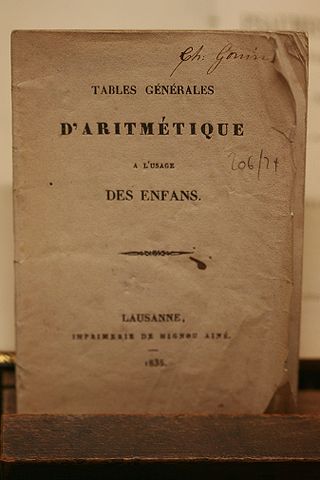
Arithmetic is an elementary part of mathematics that consists of the study and use of the traditional operations on numbers: addition, subtraction, multiplication, and division. It can also be regarded as including exponentiation, extraction of roots, and taking logarithms. Types of numbers manipulated in arithmetic include the natural numbers, which are used to count quantities; integers, which include the negative counterparts of the positive natural numbers 1, 2, 3, ...; fractions or rational numbers, which can fall in between the integers; and all of the other real numbers, which together form the complete number line. Arithmetic can be applied in even wider contexts, like the complex numbers.
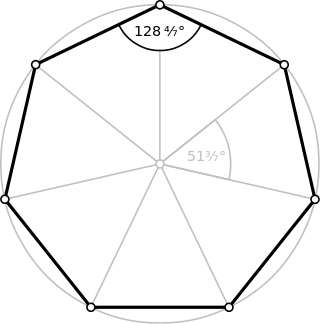
In mathematics, a field is a set on which addition, subtraction, multiplication, and division are defined and behave as the corresponding operations on rational and real numbers do. A field is thus a fundamental algebraic structure which is widely used in algebra, number theory, and many other areas of mathematics.

An integer is the number zero (0), a positive natural number or a negative integer. The negative numbers are the additive inverses of the corresponding positive numbers. The set of all integers is often denoted by the boldface Z or blackboard bold .

Multiplication is one of the four elementary mathematical operations of arithmetic, with the other ones being addition, subtraction, and division. The result of a multiplication operation is called a product.
1 is a number representing a single or the only entity. 1 is also a numerical digit and represents a single unit of counting or measurement. For example, a line segment of unit length is a line segment of length 1. In conventions of sign where zero is considered neither positive nor negative, 1 is the first and smallest positive integer. It is also sometimes considered the first of the infinite sequence of natural numbers, followed by 2, although by other definitions 1 is the second natural number, following 0.

Division is one of the four basic operations of arithmetic. The other operations are addition, subtraction, and multiplication. What is being divided is called the dividend, which is divided by the divisor, and the result is called the quotient.
A multiplication algorithm is an algorithm to multiply two numbers. Depending on the size of the numbers, different algorithms are more efficient than others. Efficient multiplication algorithms have existed since the advent of the decimal numeral system.

Addition is one of the four basic operations of arithmetic, the other three being subtraction, multiplication and division. The addition of two whole numbers results in the total amount or sum of those values combined. The example in the adjacent image shows two columns of three apples and two apples each, totaling at five apples. This observation is equivalent to the mathematical expression "3 + 2 = 5".

Subtraction is one of the four arithmetic operations along with addition, multiplication and division. Subtraction is an operation that represents removal of objects from a collection. For example, in the adjacent picture, there are 5 − 2 peaches—meaning 5 peaches with 2 taken away, resulting in a total of 3 peaches. Therefore, the difference of 5 and 2 is 3; that is, 5 − 2 = 3. While primarily associated with natural numbers in arithmetic, subtraction can also represent removing or decreasing physical and abstract quantities using different kinds of objects including negative numbers, fractions, irrational numbers, vectors, decimals, functions, and matrices.
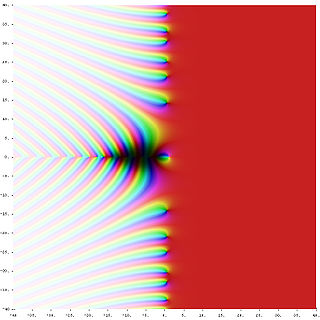
In mathematics, analytic number theory is a branch of number theory that uses methods from mathematical analysis to solve problems about the integers. It is often said to have begun with Peter Gustav Lejeune Dirichlet's 1837 introduction of Dirichlet L-functions to give the first proof of Dirichlet's theorem on arithmetic progressions. It is well known for its results on prime numbers and additive number theory.
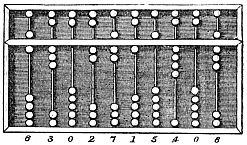
The suanpan, also spelled suan pan or souanpan) is an abacus of Chinese origin first described in a 190 CE book of the Eastern Han Dynasty, namely Supplementary Notes on the Art of Figures written by Xu Yue. However, the exact design of this suanpan is not known. Usually, a suanpan is about 20 cm (8 in) tall and it comes in various widths depending on the application. It usually has more than seven rods. There are two beads on each rod in the upper deck and five beads on each rod in the bottom deck. The beads are usually rounded and made of a hardwood. The beads are counted by moving them up or down towards the beam. The suanpan can be reset to the starting position instantly by a quick jerk around the horizontal axis to spin all the beads away from the horizontal beam at the center.
Principles and Standards for School Mathematics (PSSM) are guidelines produced by the National Council of Teachers of Mathematics (NCTM) in 2000, setting forth recommendations for mathematics educators. They form a national vision for preschool through twelfth grade mathematics education in the US and Canada. It is the primary model for standards-based mathematics.
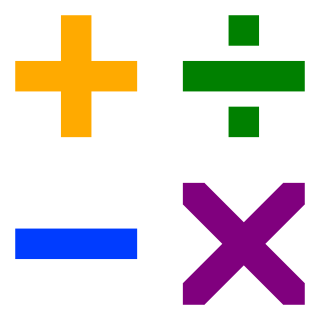
Elementary arithmetic is a branch of mathematics involving basic numerical operations, namely addition, subtraction, multiplication, and division. Due to its low level of abstraction, broad range of application, and position as the foundation of all mathematics, elementary arithmetic is generally the first critical branch of mathematics to be taught in schools.
Lattice multiplication, also known as the Italian method, Chinese method, Chinese lattice, gelosia multiplication, sieve multiplication, shabakh, diagonally or Venetian squares, is a method of multiplication that uses a lattice to multiply two multi-digit numbers. It is mathematically identical to the more commonly used long multiplication algorithm, but it breaks the process into smaller steps, which some practitioners find easier to use.
Arithmetic is an elementary branch of mathematics that is widely used for tasks ranging from simple day-to-day counting to advanced science and business calculations.
The following outline is provided as an overview of and topical guide to algebra:
Singapore math is a teaching method based on the national mathematics curriculum used for first through sixth grade in Singaporean schools. The term was coined in the United States to describe an approach originally developed in Singapore to teach students to learn and master fewer mathematical concepts at greater detail as well as having them learn these concepts using a three-step learning process: concrete, pictorial, and abstract. In the concrete step, students engage in hands-on learning experiences using physical objects which can be everyday items such as paper clips, toy blocks or math manipulates such as counting bears, link cubes and fraction discs. This is followed by drawing pictorial representations of mathematical concepts. Students then solve mathematical problems in an abstract way by using numbers and symbols.

In mathematics, a matrix is a rectangular array or table of numbers, symbols, or expressions, arranged in rows and columns, which is used to represent a mathematical object or a property of such an object.
A concrete number or numerus numeratus is a number associated with the things being counted, in contrast to an abstract number or numerus numerans which is a number as a single entity. For example, "five apples" and "half of a pie" are concrete numbers, while "five" and "one half" are abstract numbers. In mathematics the term "number" is usually taken to mean an abstract number. A denominate number is a type of concrete number with a unit of measure attached with it. For example, "5 inches" is a denominate number because it has the unit inches after it.
In mathematics education, there was a debate on the issue of whether the operation of multiplication should be taught as being a form of repeated addition. Participants in the debate brought up multiple perspectives, including axioms of arithmetic, pedagogy, learning and instructional design, history of mathematics, philosophy of mathematics, and computer-based mathematics.
References
- ↑ "Skip Counting" . Retrieved 2008-02-22.